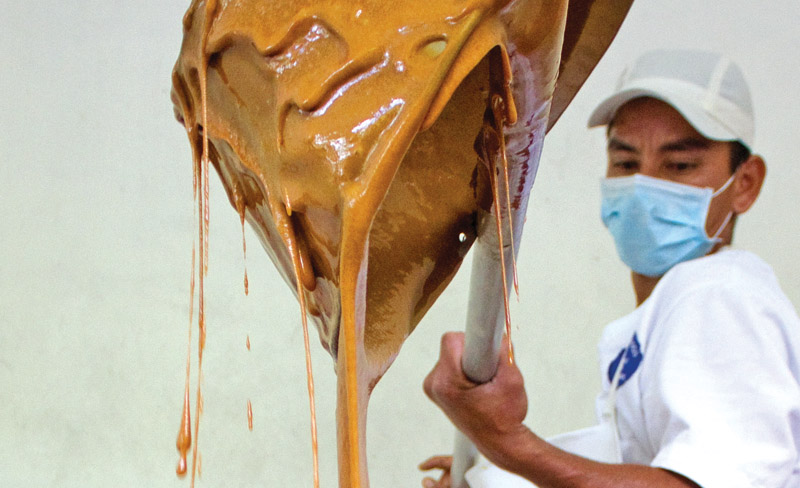Life is sweet in Nocaima, where an age-old tradition is undergoing a major makeover in the hopes that panela, the flavorful unrefined cane sugar that Colombians use in everything from hot tea to baked goods, might help turn this small Andean town into the nation’s next agricultural hotspot.
Other regions like Valle del Cauca boast a long historical connection to panela, and the majority of Colombia’s departments support at least modest sugar cane cultivation. By contrast, Nocaima only started mass sugar cane cultivation about 10 years ago, but industrious farmers have made up for lost time.
[slideshow gallery_id=”2″]
Vast fields of tall, grassy cane cover the hilly countryside near the Cundinamarca town, and the grinders and boilers of local panela producers run almost nonstop.
“We stopped complaining about how much better off the coffee growers were and started to organize,” said Libia Mery Sánchez, who runs a panela packaging operation in addition to heading ASOPROPANOC, the Nocaima Panela Producers Association. “Now we have 26 young women employed at our packing plant and we make lots of different products from panela, which allows us to sell the same quantities at much higher prices.”
An adopted love
Sugarcane arrived in the West from India more than 500 years ago, and while the motherland of panela remains the world’s largest producer, Colombia is hot on the heels of the subcontinent. Interestingly, Colombians consume more panela than any other country, averaging an impressive 19 kilograms per capita annually.
While some other sweeteners owe more to modern chemistry than nature, panela production remains largely unchanged over the last half millennium. Raw cane is ground through a press that extracts a foamy, brown juice. The juice, initially mostly water, then boils in a series of large cauldrons while being stirred and frothed by hand with metal paddles and buckets to help thicken the liquid into syrup. Finally, the syrup is poured into different molds where it dries into bricks of cane sugar.
While panela, like other sugars, should be consumed in moderation it undoubtedly beats out refined sweeteners in terms of nutrition, offering vitamins and minerals along with the added benefit of being all natural with no additives of any kind. Unlike other sugars, panela is considered a food product rather than a sweetener by the Colombian government, a significant distinction for many involved in the panela industry.
“Having panela recognized as a food product allows us to improve the quality of life for producers and that’s the most important thing we can do,” noted Ámparo Garzón, the mayor of Nocaima, explaining that the recognition allows panela producers to charge more and receive more benefits.
Sweet for the body and the planet, too
In many cases, panela production is also organic, and the USDA and the European Union officially certified the Nocaima growers association as an organic producer in July. Part of the effort to position the sweet treat as a more popular and lucrative product – both in Colombia and abroad- involves the constant dreaming up of new presentations like candies, teabags and granulated panela. Some producers are even working on a vitamin- fortified version.
“The moment for panela has arrived in Colombia. Even more, the moment for panela has arrived in the world,” said Leonardo Ariza, president of FedePanela, a non-profit guild of Colombian sugar cane growers. Indeed, if the recent successes of a once-sleepy town like Nocaima are any indication, this traditional treat certainly seems to be enjoying a well-deserved moment in the spotlight.

